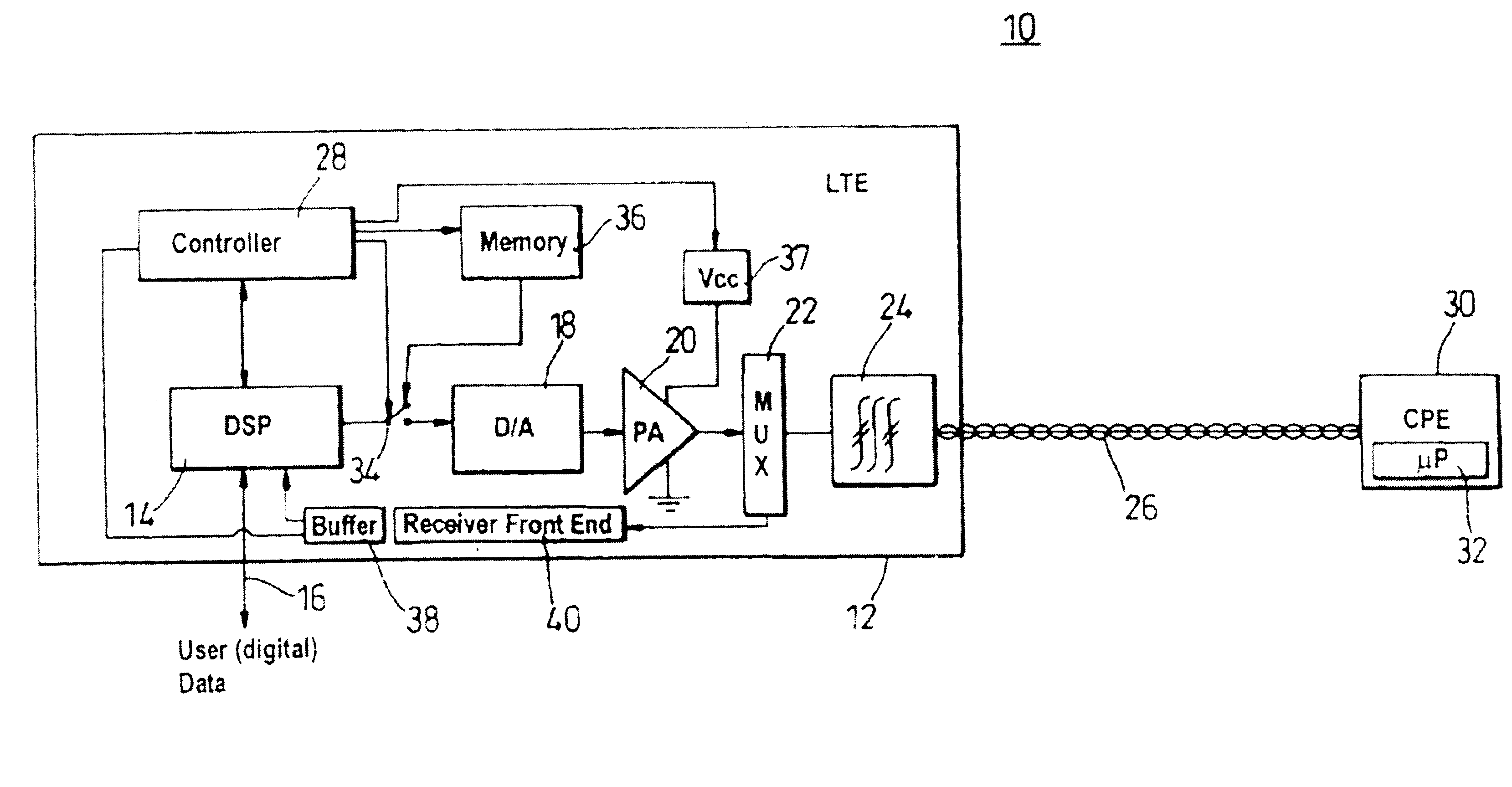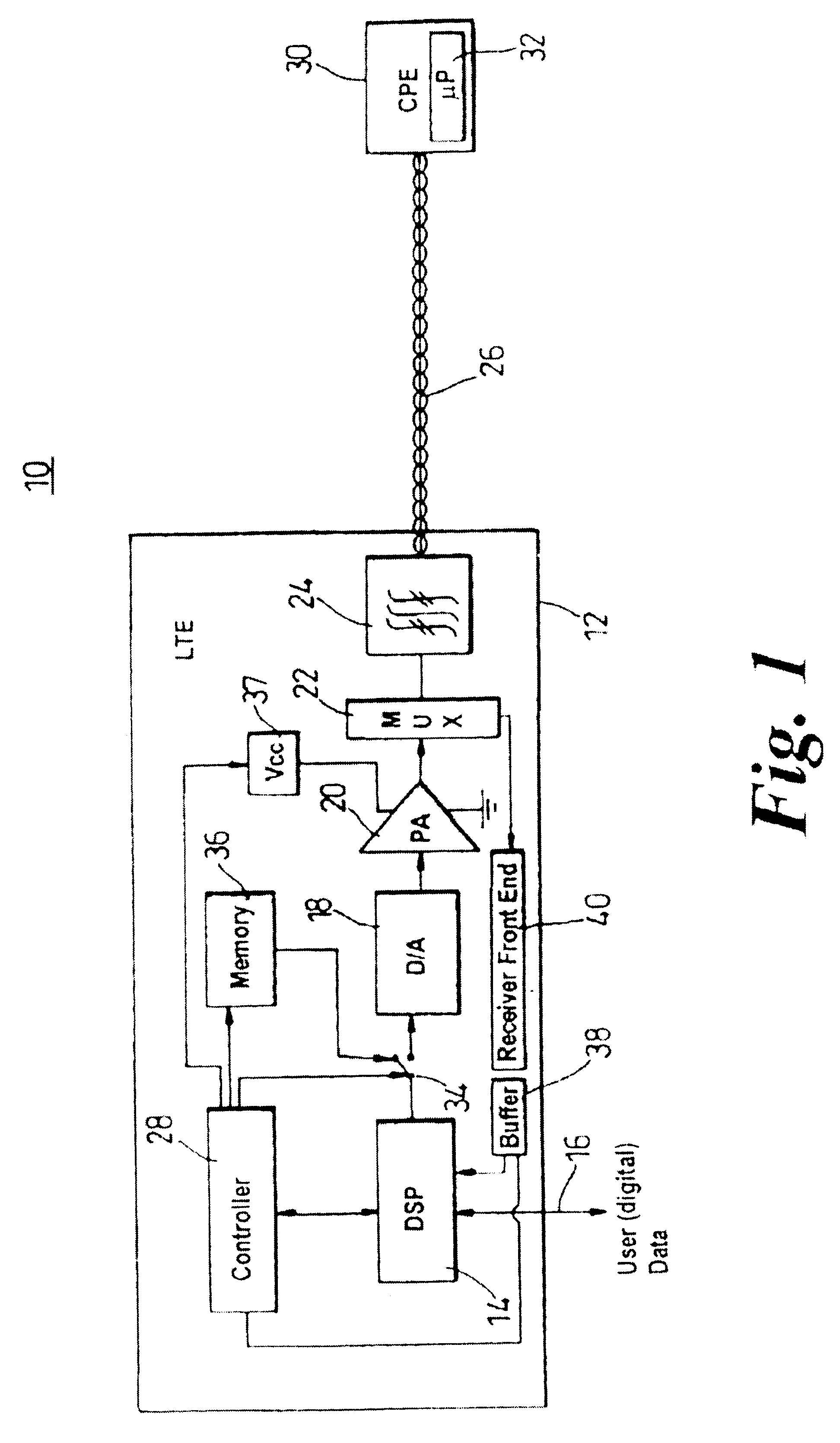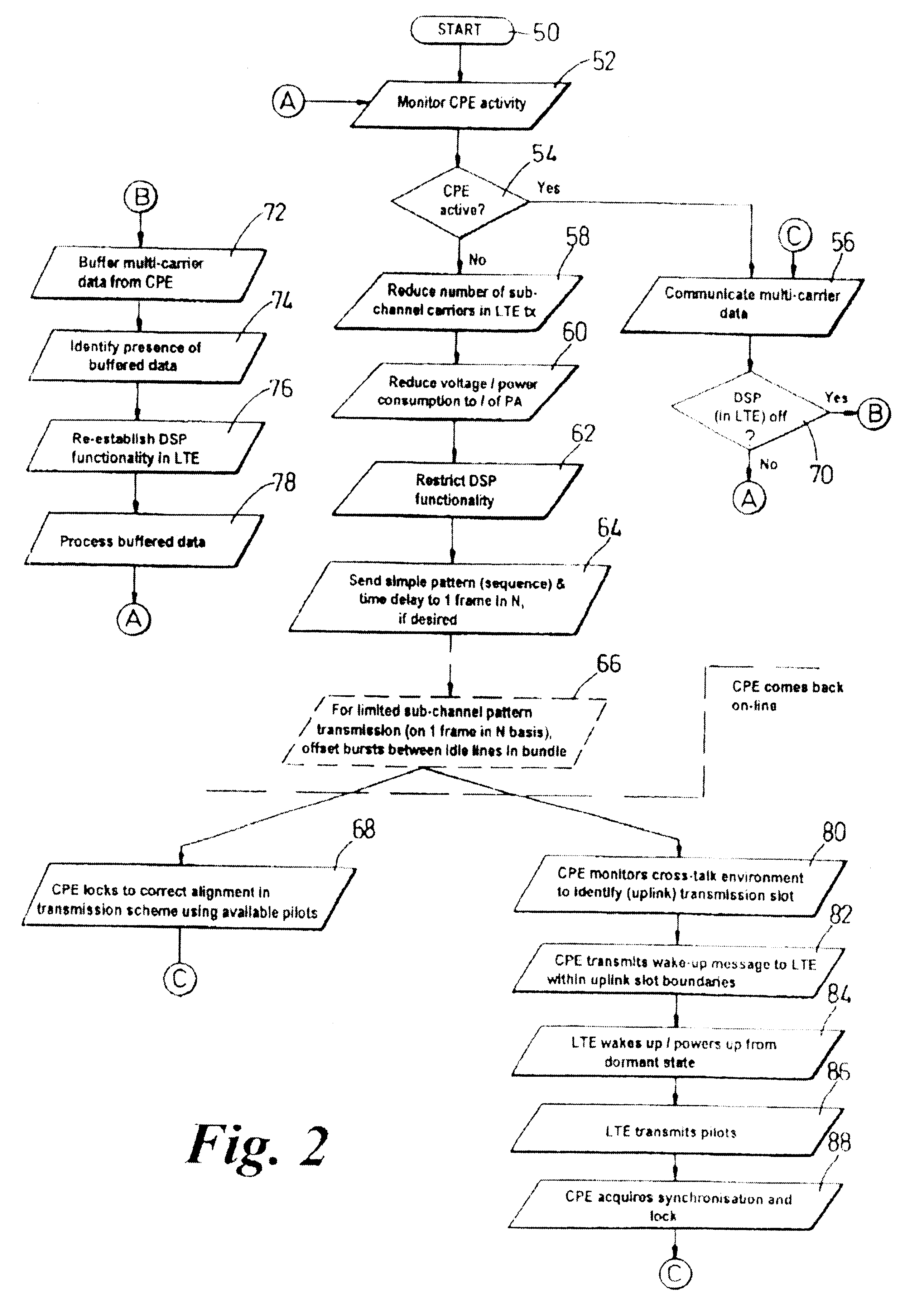Apparatus, method and system having reduced power consumption in a multi-carrier wireline environment
- Summary
- Abstract
- Description
- Claims
- Application Information
AI Technical Summary
Benefits of technology
Problems solved by technology
Method used
Image
Examples
Embodiment Construction
FIG. 1 shows an enhanced wireline system 10 employing various preferred embodiments of the present invention. A transmission path of LTE 12 contains a DSP 14 responsive to user data 16. The DSP 14 is coupled through a D / A converter 18 to a power amplifier or line driver (PA) 20 which is, in turn, coupled to a multiplexer / demultiplexer (MUX) 22 that therefore supports bi-directional communication within the LTE 12. A filter 24 is disposed intermediate between the MUX 22 and a wireline resource 26, such as a twisted copper pair. Operation of the LTE is controlled by a controller 28, although this function could be integrated into the DSP 14.
It will be appreciated that, generically, an exchange will contain a plurality of line cards and hence serve a plurality of CPEs through individual wireline resources, such as twisted copper pair. Moreover, the multiplicity of wireline resources will, to some extent, generally be bundled together before branching to a specific CPE. The exchange per...
PUM
 Login to View More
Login to View More Abstract
Description
Claims
Application Information
 Login to View More
Login to View More - R&D
- Intellectual Property
- Life Sciences
- Materials
- Tech Scout
- Unparalleled Data Quality
- Higher Quality Content
- 60% Fewer Hallucinations
Browse by: Latest US Patents, China's latest patents, Technical Efficacy Thesaurus, Application Domain, Technology Topic, Popular Technical Reports.
© 2025 PatSnap. All rights reserved.Legal|Privacy policy|Modern Slavery Act Transparency Statement|Sitemap|About US| Contact US: help@patsnap.com



